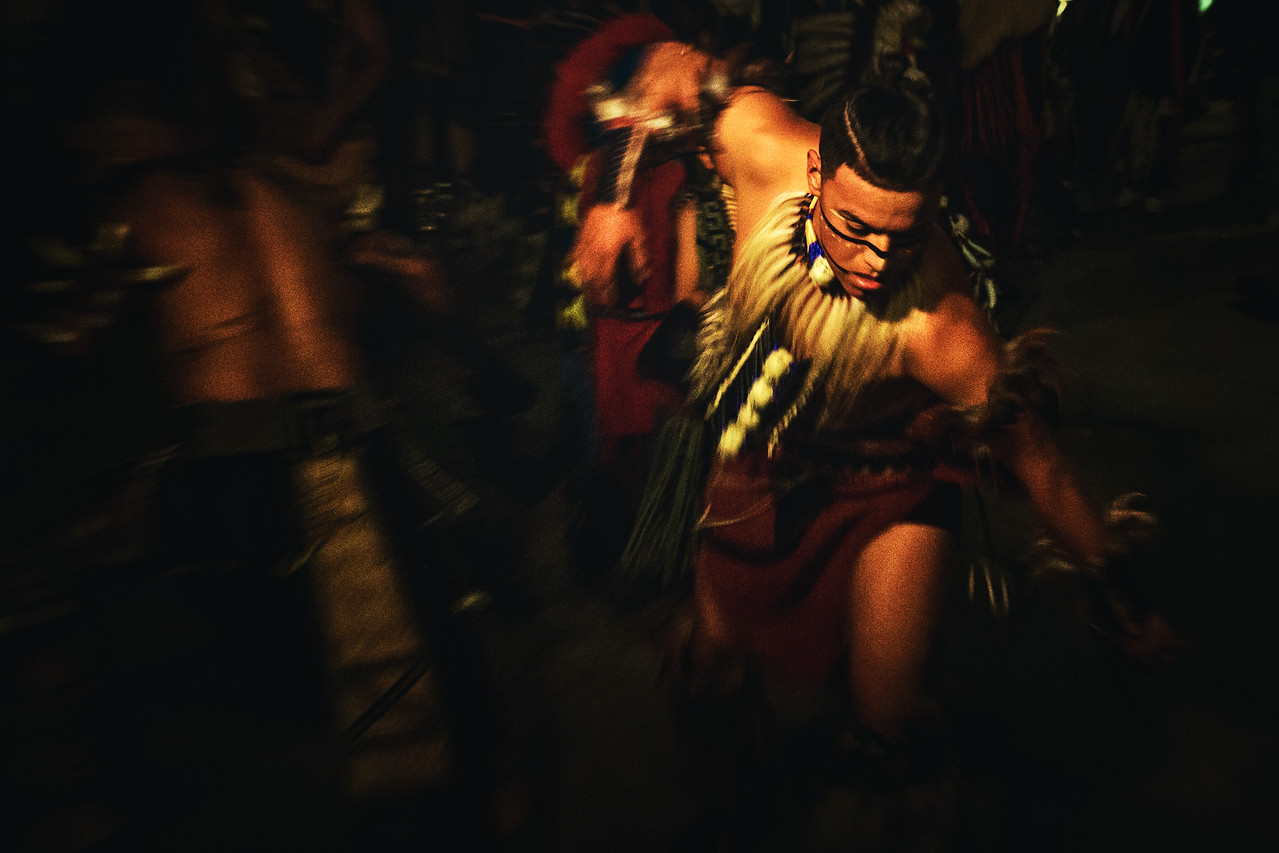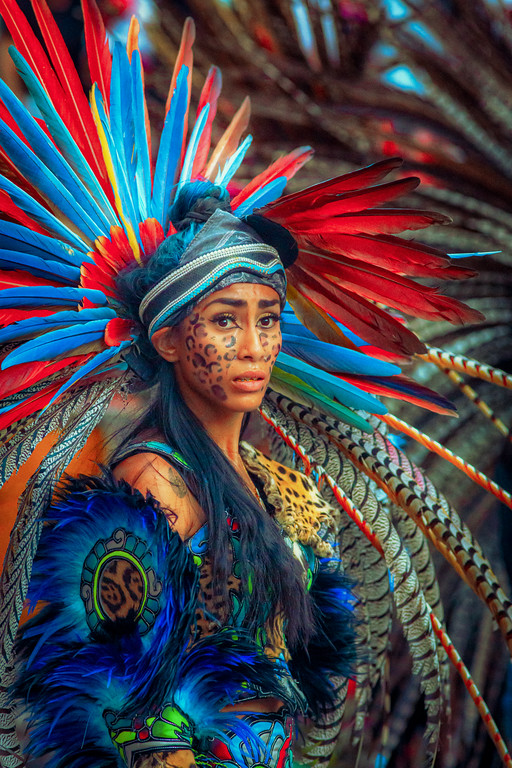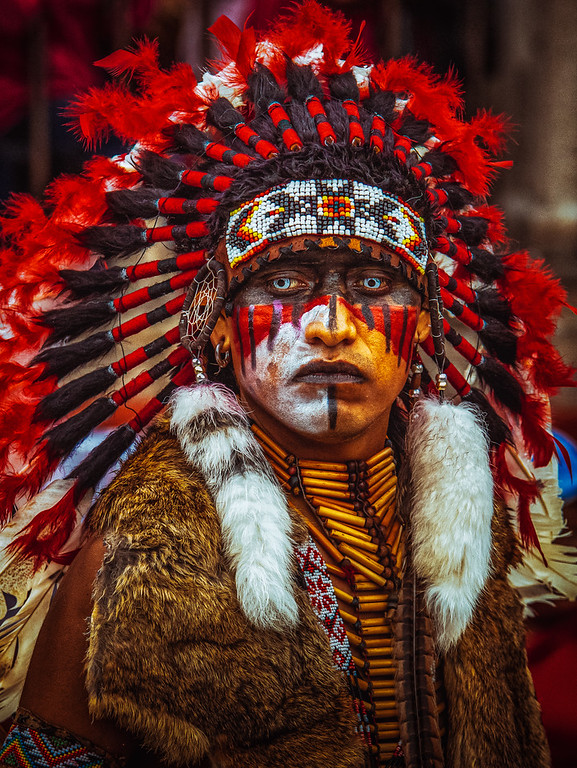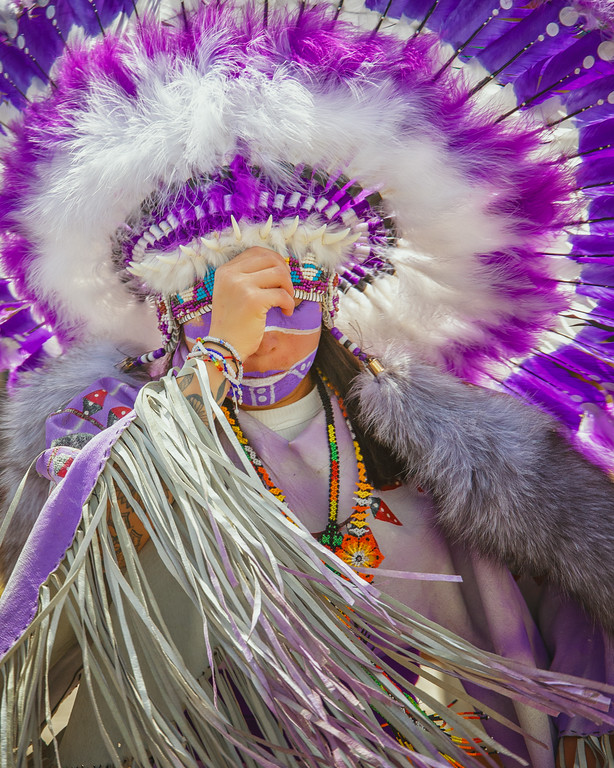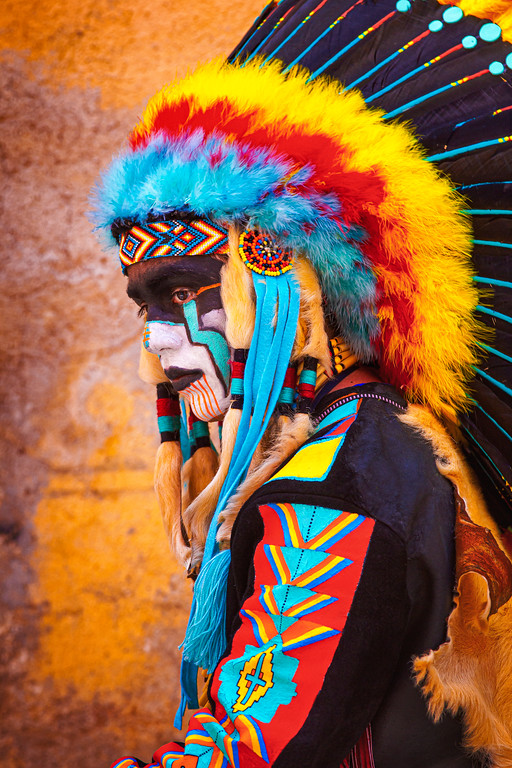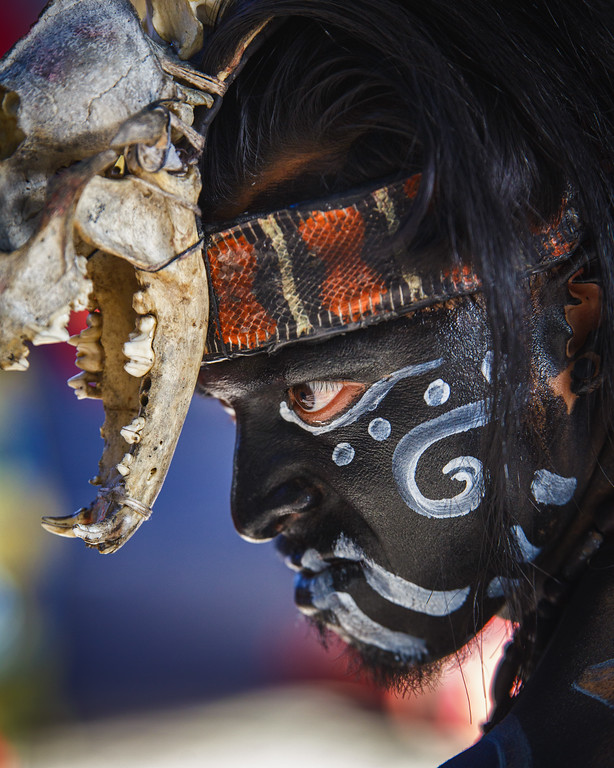Photographing Aztec dancers in Action
Photographing Aztec dancers in a parade is an exhilarating experience. Their vibrant costumes, dynamic movements, and cultural significance offer a unique opportunity to create stunning images.
However, capturing the essence of these performances requires an understanding of the nuances of lighting, composition, timing, and cultural respect.
In this guide, we will explore how to create amazing photos of Aztec dancers that will help you improve your street photography skills.
Understanding Lighting Needs
Lighting is crucial in photography, and for outdoor parades, the quality of light can make or break your shot.
Soft light, which you often find in the early morning or late afternoon, provides gentle illumination that reduces harsh shadows and highlights. This kind of light is ideal for capturing the intricate details of Aztec dancers' costumes and their expressive movements.
Aim to shoot during the "golden hours" – shortly after sunrise or before sunset. The light is warmer and softer, giving your photos a more pleasing aesthetic.
The midday sun can create harsh shadows and overexposed highlights, so if you must shoot at this time, try to find shaded areas or use a diffuser to soften the light.
Using natural light creatively can significantly enhance your photos. Shooting into the sun can create a beautiful halo effect around the dancers, highlighting their outlines.
Be careful with your exposure settings to avoid silhouettes unless intentionally desired. If shadows are too harsh, use a reflector or fill flash to lighten dark areas. This can help balance the exposure, especially on the dancers' faces.
Composition Techniques
Effective composition draws attention to your subject and enhances the storytelling aspect of your photos. Clean backgrounds that complement the dancers, such as historic buildings or natural landscapes, add context to the cultural setting.
Avoid cluttered backgrounds that distract from the dancers. Using elements in the foreground and background to create depth adds a three-dimensional feel to your photos, making them more engaging.
The rule of thirds is a fundamental principle: place your subject on one of the corners of the square in the middle of the grid. This off-center placement often leads to more dynamic and balanced compositions.
capturing movement
Capturing movement is essential in photographing dancers.
Use a fast shutter speed (1/500th of a second or faster) to freeze the dancers' movements, ensuring sharp images even as they move quickly.
For a creative effect, try panning with the dancers.Follow their movement with your camera while using a slower shutter speed.This technique blurs the background while keeping the subject relatively sharp, conveying a sense of motion.
Camera Settings
Technically, using the right camera settings is crucial. For action shots, shutter priority mode (Tv/S) is ideal as it allows you to control the shutter speed while the camera adjusts the aperture. This ensures that you can freeze the motion of the dancers effectively.
Keep your ISO as low as possible to avoid noise. In low-light conditions, increase the ISO, but be mindful of the potential for graininess in your photos.
Use continuous autofocus (AF-C/AI Servo) to keep the dancers in focus as they move. This mode is particularly useful for fast-paced action.
Final Tips
Don't just focus on the wide shots. Capture close-ups of the dancers' costumes, jewelry, and face paint. These details add richness to your story.
Aim to create a series of photos that tell a cohesive story by capturing the preparation, the performance, and the moments of rest. This narrative approach will give your audience a deeper understanding of the event.
Photographing Aztec dancers in a parade is a rewarding experience that combines technical skill with cultural appreciation.
By focusing on lighting, composition, timing, and respect, you can create stunning images that capture the beauty and significance of these performances. Happy shooting!
Photography lesson plans pack (Printables)
Jump right into teaching photography with our exclusive Photography Lesson Plans pack.
Includes:
- 10 Photography Lesson Plans
- 1 Teacher's Guide
- 3 Photography Study Guides
- 30-Day Photography Challenge
- 1 Student Workbook
- 24 Cut-Out Photo Flash Cards
- 1 Photo Scavenger Hunt
